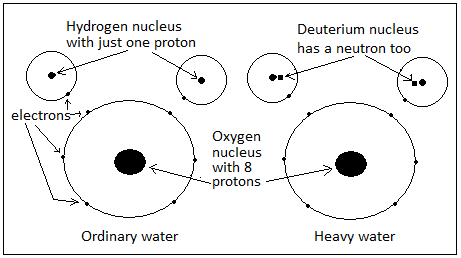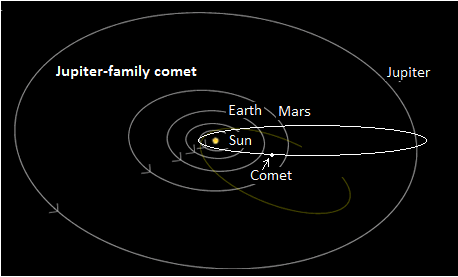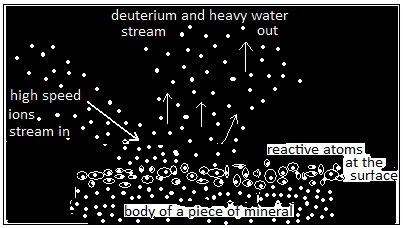Separation of a ‘heavy’ component of water is found to happen instantaneously on the surface of comets, says S.Ananthanarayanan.
One way to explain how the earth has so much water has been that the water came in with comets. The content of water whose molecules have the ‘heavy’ version of hydrogen atoms, however, was found to be much higher in the water vapour surrounding the comet, 67P, than what is found on the earth. This discovery persuaded a view that water on the earth may not have come from the 67P class of comets.
Yunxi Yao and Konstantinos P. Giapis, researchers at the California Institute of Technology, Pasadena report in The Astrophysical Journal, of The American Astronomical Society, that processes on the surface of the comet could increase the content of the ‘heavy’ form of hydrogen in water vapour when the comet approaches the sun. This could be the reason for the feature of the vapour cloud that surrounds 67P, and the class of comets to which it belongs could hence still be the real source of the water content of the earth.
Like many other elements, the nucleus of the hydrogen atom can have more than one stable form. The normal hydrogen atom has a nucleus with only one proton, which is positively charged, and an electron, a comparatively light particle that is negatively charged, is in orbit around the nucleus. Another form of hydrogen, called deuterium, occurs when a neutron, a neutral particle, is added to the nucleus. As the particle is neutral, the number of electrons remains the same as before. As it is on the number and distribution of electrons that chemical properties of an atom depend, the two forms of hydrogen are almost identical.
With two particles in the nucleus, however, the atom of deuterium has twice the mass of normal hydrogen. Deuterium occurs in traces as gas and is found in the form of ‘heavy water’, or D2O, whose molecules contain deuterium atoms in place of hydrogen. The heavy water molecule, which is about 10% heavier than molecules of normal water, has a number special properties and applications.

Introducing an additional particle into the nucleus of the hydrogen atom, however, takes energy, and deuterium atoms arose only at the violent time of the big bang. Their incidence in the universe is hence rare, to the extent of just 26 parts per million. Except that in many astronomical bodies, because of different concentrating processes, the content is a lot higher. In giant gas planets, like Jupiter, it is the same 0.000026% as the rest of the universe, but in the earth’s oceans it is six times as much, at 156 parts per million. This is very close to the content in certain groups of comets, and it has been the view that it is comets that brought much of the water that we find on the earth.
The implicated comets, in fact, are the Jupiter-family comets, or comets which the gravitational forces of Jupiter have drawn into closer orbits around the sun. The source of most comets is in Oort Belt, or the distant cloud of icy remnants of the formation of the Solar System. But in these comets, the ratio of deuterium to hydrogen was twice that on the earth. It was only in the case of Jupiter-family comets that the ratio matched and they were considered an important source of terrestrial water.

The problem arose with the detailed study carried out by Rosetta mission, of 2014, which sent Philae, an observation station, down to the surface of 67P, a four km-wide Jupiter-family comet. The study showed that the content of heavy water in the vapour around the comet was more than three times higher than what was found on the earth. This disturbed the notion that water came to the earth from this class of comets.
Giapis and Yao
The team of researchers from Caltech, Pasadena have been working on the interaction of high speed ions, or bits of molecules that carry a charge, and the atoms at the surface of materials. Given the high energy of the projectiles and the high charges in the region very close to surface atoms, molecules can be split and reassembled in ways that are normally not possible, or possible only very slowly. As the coma, or the gas cloud that forms around a comet as it nears the sun, is rich in water vapour, the impact of water ions, which get accelerated by radiation from the sun, on the surface of comets, is of interest. And during this study, the researchers find that water ions impinging on the surface tend to pick up atoms of deuterium, and transform into heavy water.

Heavy water has industrial use, particularly in nuclear reactors, where heavy water helps slow down high energy neutrons and promote the nuclear fission chain reaction. This calls for 99.99% pure heavy water and the extraction, from ordinary, fresh water takes elaborate and energy intensive processing. What the Caltech researchers have published, in contrast, is a painless method where water ions are speeded up and thrown against a deuterium-rich surface, to transform to heavy water.
That such a process is possible has implications in understanding the discovery of high deuterium content in the coma of the comet 67P. The researchers observe that the surface of the comet consists of minerals that are rich in deuterium and the energy of the ionised water molecules would bring about the hydrogen-deuterium exchange. There would hence be transfer of deuterium content from the surface of the comet to the water vapour in the coma, and hence the detection of high levels of heavy water.
The journal paper works it out that the deuterium to hydrogen ratio should increase as the comet approaches the sun. The actual relationship of how this ratio changes with distance was one of the objectives of the Rosetta mission but has not been reported, the paper says. But the paper has shown that the high ratio on 67P is because of this water ion – surface interaction. It would hence be hasty to conclude, from the higher ratio on 67P, compared to the level on the waters of the earth, that Jupiter-family comets were not the source of water on the earth. The evidence of the water on these comets being comparable, in deuterium/hydrogen ratio, to sea water is still valid!
Abiotic O2
Giapis and Yao followed the present paper with one that reports another feature of comets and the effect of high speed water ions. In the quest for signs of extra-terrestrial life, scientists look for traces of gases that are related to life processes. These gases are carbon dioxide, methane, ozone and, of course, free oxygen, which was considered possible only through plants and photosynthesis. The finding that the 67P coma, although barren and doubtlessly harbouring no life forms, still had high oxygen content, was hence puzzling.
Giapis and Yao showed that high speed water ions that crash into metallic oxides on the comet surface can generate free oxygen and eject the free oxygen ions, to form molecules. Presence of oxygen alone, on a distant body, could hence not be taken as an indicator of life processes.
Comets brought iron too
All the metallic iron on the earth got converted to oxides and ore long before humans evolved. As early civilisations did not have coal fires, the first metals extracted from ores were copper, silver and gold, which can be worked with wood fires. Copper was alloyed with tin and formed the basis of the Bronze Age, which starts in 3,300 BC. Smelting of iron became possible only after 1,200 BC.
Discovery of iron artefacts in pre–iron-age archaeological sites was hence mysterious. The sites, in fact, predate even the Bronze Age.
Analyses of these artefacts have revealed that they were fashioned out of meteorites which fell to the earth, where the high temperature of entry would have allowed skeins of metal to form. The samples were found to be rich in nickel, cobalt, phosphorus and germanium, which marked them as of meteoric origin.
The iron beads appear along with gold and gemstones, which suggest that they had value. This must have been so, as any iron would be rare and may have been seen to have ‘fallen from the heavens’.
------------------------------------------------------------------------------------------